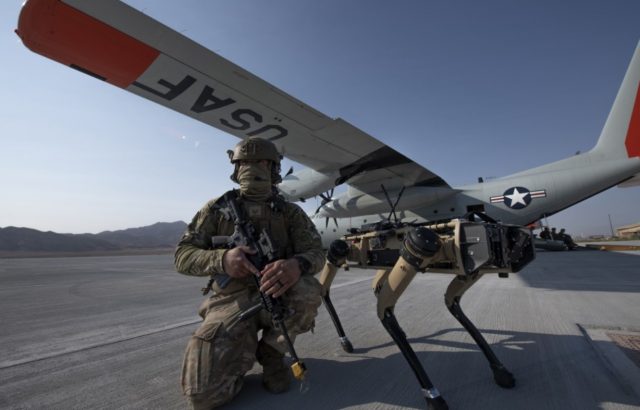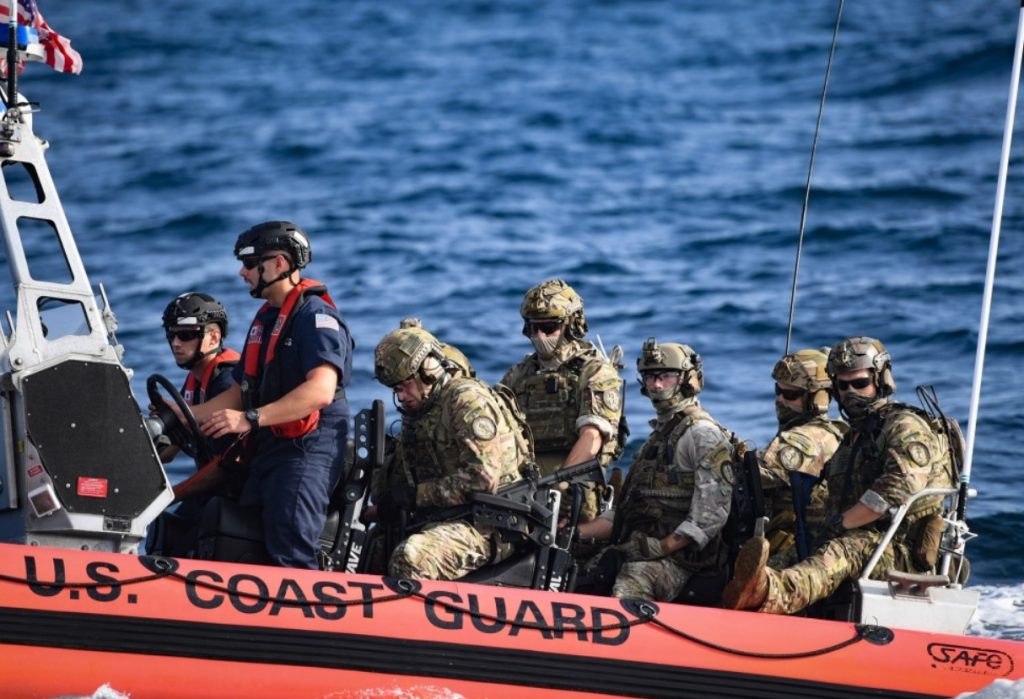
The US Air Force, in partnership with US Northern Command and US Space Command, held a second, more complex and rigorous field test of the Advanced Battle Management System (ABMS) between August 31 and September 3.
In the latest exercise, known as an “onramp,” operators used the innovative and evolving approach to joint warfighting to detect and defeat efforts to disrupt US operations in space. They also used ABMS to counter attacks against the US homeland, including shooting down a cruise missile “surrogate” with a hypervelocity weapon.
The ABMS allows a joint force to use cutting-edge methods and technologies to rapidly collect, analyze, and share information and make decisions in real time.
“Future battlefields will be characterized by information saturation. One of the key objectives of this onramp was to present a dizzying array of information for participants to synthesize, just like they would see in a real operation,” said Dr. Will Roper, Assistant Secretary of the Air Force for acquisition, technology and logistics.
“This compelled commanders and operators to trust data analytics and artificial intelligence to understand the battle. Valuing data as an essential warfighting resource, one no less vital than jet fuel or satellites, is the key to next-gen warfare,” Roper said.
ABMS collected and fused information in new ways by also making the information available instantaneously across geographically-separated forces spanning the operational to tactical levels of combat.
The weeklong onramp further tested and refined technologies necessary for ABMS, which is building the “internet of things” of the military that collects and makes sense of vast amounts of data supported by artificial intelligence. ABMS links weapon systems and personnel in the air, on the ground, at sea as well as space and cyber domains in a seamless manner that has not yet been available to today’s warfighters.

This latest installment of ABMS was a significant advance in both size and ambition from the first, which was held in December. The most recent onramp included 70 industry teams, 65 government teams from every service including the Coast Guard, 35 military platforms, 30 geographic locations and four national test ranges, all contributing to what officials say could be the largest joint experiment in recent history.
ABMS as the backbone of Joint All-Domain Command and Control
ABMS, which is the top modernization priority for the Department of the Air Force with a budget of $3.3 billion over five years, will be the backbone of a network-centric approach in partnership with all the services across the Department of Defense. That broader effort is known as Joint All-Domain Command and Control (JADC2). When fully realized, senior leaders say JADC2 will allow US forces from all services—as well as allies—to receive, fuse and act upon a vast array of data and information in all domains at the speed of relevance.
Aside from the system’s embrace of a different warfighting philosophy and practice, ABMS is utilizing an approach to developing the complex system that breaks with traditional defense approaches and practices.
After the field test ended, Roper said that some capabilities are ready to be used. Chief among them, he said, is using cloud computing.
Senior leaders and developers are stressing speed and setting an ambitious schedule of onramps to be held every four months or so to advance the capabilities demonstrating the most promise and provide opportunities for operational commanders to begin to use ABMS capabilities as they emerge in their day-to-day operations.
Air Force Chief of Staff Gen. Charles Q. Brown, Jr., who has previously served in leadership roles in Europe, the Middle East and the Indo-Pacific, assesses that ABMS is a capability that is needed today and not later, citing its imperative for deterrence and its application for Joint All Domain Operations.
“To win the contested, high-end fight, we need to accelerate how we field critical technologies today,” Brown said. “Rapid, iterative experimenting ultimately places relevant capability in warfighters’ hands faster. We cannot afford to slow our momentum on ABMS. Our warfighters and combatant commands must fight at internet speeds to win.”


























